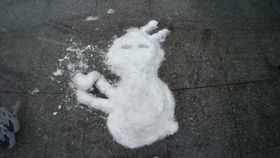Can You Sand Paper Mache?
Have you ever wondered if you can sand paper mache? This versatile craft technique, often used to create lightweight, durable objects, can indeed be sanded. In this article, we’ll delve into the process, benefits, and tips for sanding paper mache to help you achieve a smooth, professional finish.
Understanding Paper Mache

Paper mache is a traditional craft technique that involves layering strips of paper with a paste made from flour, water, and sometimes glue. This mixture hardens as it dries, creating a solid structure that can be shaped and painted. While paper mache is known for its lightweight nature, it can also be quite durable when properly constructed.
Why Sand Paper Mache?

Sanding paper mache serves several purposes. It helps to smooth out any imperfections, such as bumps or air bubbles, that may have formed during the construction process. Additionally, sanding can improve the adhesion of paint or varnish, ensuring a more even and durable finish. Lastly, sanding can enhance the overall appearance of your paper mache project, giving it a polished and refined look.
Materials Needed

Before you begin sanding your paper mache project, gather the following materials:
- Paper mache object
- Sandpaper (various grits, starting with a higher grit like 120 or 150)
- Sanding block or sanding sponge
- Dust mask (optional, but recommended for protection)
- Soft cloth or brush for cleaning
The Sanding Process
Follow these steps to sand your paper mache project:
- Start with a higher grit sandpaper: Begin by sanding your paper mache object with a higher grit sandpaper, such as 120 or 150. This will help remove any large imperfections or air bubbles without damaging the surface.
- Use a sanding block or sponge: Apply even pressure while sanding to avoid creating uneven surfaces. A sanding block or sponge can help you maintain a consistent pressure and make the process more manageable.
- Work in small sections: Sand your paper mache object in small sections, moving in a circular or back-and-forth motion. This will help prevent sanding through the paper mache layers and damaging the surface.
- Gradually move to a finer grit: Once the larger imperfections have been removed, switch to a finer grit sandpaper, such as 220 or 320. This will help achieve a smoother finish and prepare the surface for painting or varnishing.
- Clean the surface: After sanding, use a soft cloth or brush to remove any dust or debris from the surface. This will ensure a clean, smooth finish for your project.
Benefits of Sanding Paper Mache
Sanding paper mache offers several benefits:
- Improved appearance: Sanding can give your paper mache project a polished, professional look.
- Enhanced durability: A smooth surface can improve the adhesion of paint or varnish, making your project more durable.
- Preparation for painting: Sanding helps to create a clean, smooth surface that is ready for painting or varnishing.
Common Mistakes to Avoid
When sanding paper mache, it’s important to avoid the following common mistakes:
- Using too much pressure: Applying too much pressure while sanding can damage the paper mache layers and create an uneven surface.
- Skipping the dusting step: Failing to clean the surface after sanding can leave dust or debris on the finished project.
- Using the wrong grit sandpaper: Starting with a finer grit sandpaper can damage the paper mache layers and create an uneven surface.
Conclusion
Now that you know you can sand paper mache, you can enjoy the benefits of a smooth, professional finish on your craft projects. By following the steps outlined in this article, you can achieve a polished look and enhance the durability of your paper mache creations.